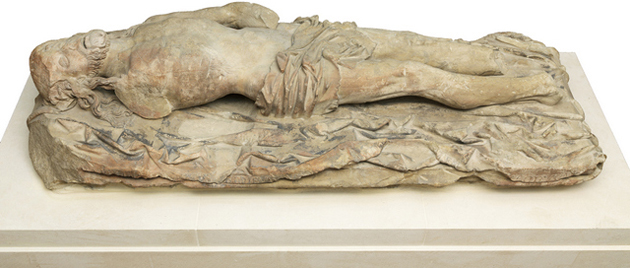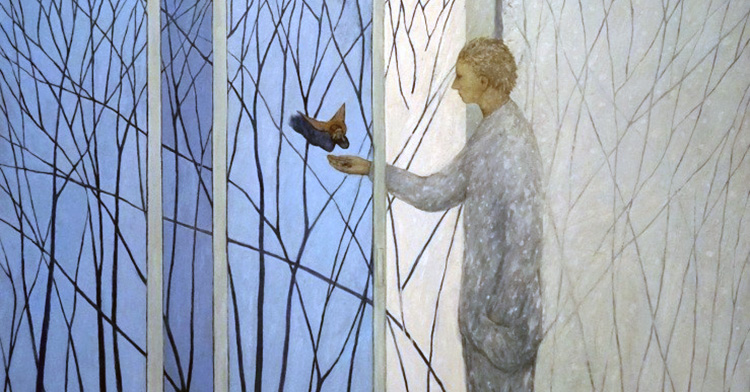Anna Marazuela Kim
Position: Jefferson Fellow and associate fellow at the Institute for Advanced Studies in Culture, University of Virginia
Vocation: Art historian, researcher and writer
Collaboration: Member of an international group of scholars and curators advancing a cross-cultural and historical investigation of iconoclasm whose research contributed to a recent exhibition at Tate Britain in London, “Art Under Attack: Histories of British Iconoclasm”
Why does iconoclasm continue to matter?
 There were two great epochs of iconoclasm -- destruction of religious artifacts and images -- both of which continue to resonate in the present.
There were two great epochs of iconoclasm -- destruction of religious artifacts and images -- both of which continue to resonate in the present.
The first was the iconoclastic period in Byzantium of the 8th and 9th centuries, when the icon was challenged and successfully defended as a legitimate means of venerating the sacred.
What emerged from that struggle is relevant not only to the history of art and religion but also to our current understanding of how images work: their power to make invisible persons and worlds present, their capacity to move us and, of course, their potential for idolatry.
The second great iconoclasm, of the Reformation, was also concerned with the power of images but particularly focused on their perceived corruption in a spiritual economy that impeded a direct relation to God. What emerged from this conflict was quite different, and farther-reaching. Europe was divided along religious lines, and countless religious images and objects were destroyed by iconoclasts. For centuries, Protestant churches remained bare.
Now, particularly as Protestants are re-engaging the arts and rethinking their connection to them, it has been interesting to study this history anew, as the Tate exhibition does. The show begins with damaged works from the Reformation and unfolds a history of image breaking that continues through to the present, examining the destruction of political monuments, artworks that have been attacked, and contemporary artists who use destruction as an aesthetic strategy in their work.
What we gain from this expanded view of iconoclasm is a sense both of its larger significance, for the history of Western culture and the present day, and of the continued potency of the broken image.
This is the paradox of iconoclasm: it draws us to the very thing it would destroy, inscribing a story and creating an object that is, in certain respects, richer and more powerful than before. The toppled monument and the defaced statue strike us with greater force than their integral counterparts, becoming potential sites of reflection but also of emotional response.
There was one object in the exhibition, a life-size, 3-ton statue depicting the dead Christ -- a work we believe was damaged by iconoclasts and later buried during the Reformation -- that elicited a particularly strong, and surprising, response in the press. A reviewer of the exhibition in The Guardian, for example, describes being deeply moved by this object, along with others that foreground the tragedy of innumerable losses of sacred art in the period.

The Dead Christ, c. 1500-1520, limestone, 197 x 68.6 cm., The Mercers’ Company, London. Currently on view as part of the exhibition, "Art Under Attack: Histories of British Iconoclasm," Tate Britain, London.
What is interesting to note is how religious images, like the Dead Christ, even in their ruined state and from a great historical distance, continue to draw us to a sense of the sacred. Here the statue, like the subject it represents, has undergone its own suffering, evoking a pathos that fluctuates between concern for the object and the sacredness of what it depicts.
I’ve recently been lecturing and writing on the complex dynamic of another ruined statue of the Dead Christ, also produced during the Reformation -- Michelangelo’s Rondanini Pietà (ca. 1550s-1564). In this last, enigmatic work of the artist before his death, in which he partially destroys the figure of Christ, I draw connections between sculptural iconoclasm and spiritual reformation. A lecture I gave at Duke on this topic is on iTunes.
Within a broader history of the West, it might be seen that modernity itself is deeply connected to the iconoclasm of the Reformation and what would come to fuller expression in the Enlightenment as the destruction of superstition and the idols of the mind.
Even as we tend to think of iconoclasm as the work of the other, the more we reflect on its history, the more we see that it is our own. Why do iconoclasm, icons and idolatry persist in our day, and what meaning can we draw from a longer history of their interrelation, in realms both secular and sacred? These are the fundamental questions that motivate my research.
The preceding is an edited transcript.












